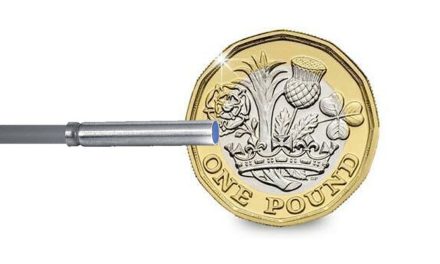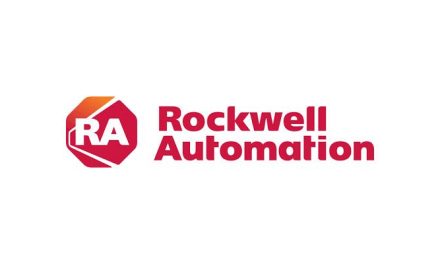In recent months, talk of AI has dominated headlines. Discussions of the metaverse have been seemingly drowned out, but has it really disappeared? The answer is a firm no; enterprises around the world continue to invest in industrial metaverse applications and workloads.
The industrial metaverse is the next enabling factor for achieving digital transformation. It is the 3D evolution of the internet – enabling interoperability between software ecosystems, and connectivity between the physical and virtual worlds. The industrial metaverse enables industrial companies to digitalize difficult physical processes, such as designing and engineering physical products, or planning and operating physical factories and warehouses. Many companies are leveraging industrial metaverse workflows to build full-physical-fidelity, real-time, immersive digital twins – industrial virtual worlds that are perfectly synchronized to their physical counterparts. The future of the industrial metaverse remains bright, with the advancement of generative AI democratizing the ability to build and operate virtual worlds and complex processes.
The concept of an industrial digital twin has been around for a while. Having been used for years by manufacturers to model parts of their production lines, simulation technologies were the foundation of the digital manufacturing revolution. But the digital twin was historically limited in its capabilities. Typically, it was a representative digital twin, meaning that it would just look like the final product. It would also be limited to replicating one machine or part, isolated from the complete manufacturing process.
Today, manufacturers can leverage state-of-the-art simulation technology to create true-to-reality digital twins on a massive scale, including 3D replicas of entire factories. A true-to-reality digital twin means that everything in the physical world has an exact duplicate in the virtual world, all the way down to the nuts and bolts. Users can run simulations to predict the near future or test possible scenarios to pick the most optimal one. Furthermore, data from the real world captured through sensors can be fed into the digital version to create a synchronized, operational digital twin that provides feedback and recommendations in real-time.
Industrial metaverse and manufacturing: a match made in digital heaven
The emergence of the critical open standard Universal Scene Description (USD), has unlocked new heights of interoperability and collaboration in the industrial metaverse.
USD, also referred to as OpenUSD, was originally developed by Pixar Animation Studios, but the capabilities have reached far beyond the silver screen. In an industrial setting, USD is used to create 3D digital replications of detailed machinery and equipment and has unlocked interoperability between a range of industry-standard 3D tools. This means that engineers can integrate USD-based workflows into existing industrial workflows and interchange 3D assets between different tools and systems.
USD can be thought of as the 3D successor of HTML. We need a uniform way of describing all things within the 3D internet, and this is the best language to do it. Manufacturers today can simulate production line reconfigurations virtually, before having to move expensive machinery in the real world. Engineers can edit and view the same assets simultaneously, bringing a new meaning to hybrid collaboration. In addition, they can then share this data across the world with factories and teams on different continents.
The industrial metaverse in action
Enterprises across industries are digitalizing their industrial datasets, processes, and systems and creating virtual representations of physical assets and environments. Several of the world’s leading manufacturers use NVIDIA Omniverse, a platform for developing metaverse applications and compute engine for building and operating custom 3D pipelines, applications, and virtual worlds. Manufacturers get more value from interoperable tools today because the user is no longer limited to working within only one application. Planners, engineers, and facility managers can now view extremely large, complex datasets in context – seeing their massive factories, thousands of pieces of equipment, and even simulated virtual workers all in one pane of glass.
BMW has adopted a digital-first approach to its manufacturing process. In the past, reconfiguring production lines was an expensive endeavor, not least because of the production downtime. Moving valuable machinery and robotics is not a quick task, so BMW uses Omniverse to ensure decisions made in the physical world are dictated by insights gathered in the virtual one. The metaverse facilitates hands-on problem-solving between numerous teams across different countries. In the metaverse, they can all interact with the same digital asset in real-time. As a result, BMW has seen 30% more efficient planning processes, with reduced planning times and improved flexibility and precision.
To maximize these benefits, the automaker is opening its newest electric vehicle factory in a virtual world two years before the real-world counterpart is due to be operational. BMW’s virtual factory is a physically-accurate digital replica, wherein logistics and production planners are able to virtually collaborate, visualize and decide on optimal production line design. This will enable BMW to reduce the risks and teething problems usually associated with new factories opening, and ensure success before committing to massive construction projects and capital expenditures.
The ability to simulate and test thousands of scenarios and variations virtually, before physical production, saves on cost and waste, while increasing operational efficiency and accuracy. Ericsson has taken this approach to the rollout of 5G, using Omniverse to build city-scale digital twins to help accurately simulate the interplay between 5G cells and the environment for maximum performance and coverage. The simulation considers factors like the locations of trees to the height and composition of buildings as these can impact 5G wireless signals in networks serving internet-connected devices. According to Ericsson, the end-to-end city-scale digital twin results in faster development cycles, better network optimization, and better, swifter networks because it delivers fast insights into what products to install where.
An industry mainstay
Across industries, manufacturers are experiencing unprecedented external pressures such as high inflation, disrupted supply chains, rising energy prices, labor shortages, and a need to achieve greater sustainability. To address these challenges, companies of all sizes are increasingly investing in digitalization and decarbonization and embracing the possibilities of the industrial metaverse.
By leveraging industrial metaverse applications such as advanced simulation and digital twins, manufacturers will be able to develop new products and services and unlock speed, agility, and operational efficiencies across their enterprises and value chains.
By Ludwig von Reiche, Managing Director at NVIDIA GmbH





